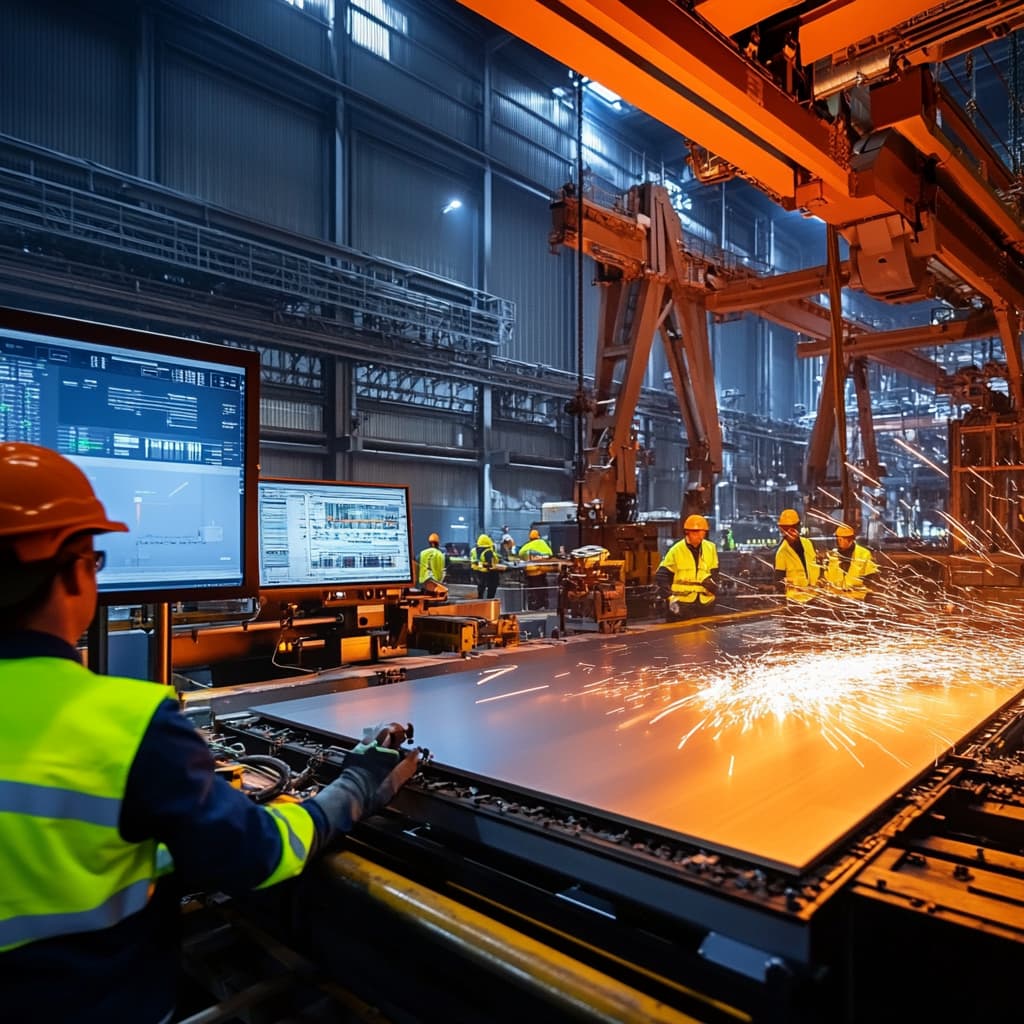The metallurgical industry has long been the backbone of industrial progress—fueling infrastructure, manufacturing, transportation, and countless other sectors. However, as global competition intensifies and sustainability goals grow more urgent, traditional metallurgical processes are under increasing pressure to become smarter, safer, and more efficient.
One of the most transformative developments in this evolution is the rise of intelligent equipment monitoring systems. Combining the power of sensors, data analytics, and artificial intelligence (AI), these systems are reshaping how metallurgical plants operate. From predictive maintenance to energy optimization and real-time safety alerts, smart monitoring is not just a technological upgrade—it’s a strategic necessity.
What Are Smart Monitoring Systems?
Smart monitoring systems refer to a network of sensors, software, and data-driven tools that track the condition, performance, and safety of machinery and infrastructure in real time. These systems can detect anomalies, predict equipment failures, and even automate decision-making processes.
In metallurgy, where equipment like blast furnaces, rolling mills, electric arc furnaces, and casting lines operate under extreme conditions, the ability to monitor every component with high accuracy is a game-changer.
Why Metallurgy Needs Smart Monitoring
The metallurgical sector faces a unique set of challenges:
- High-temperature environments and mechanical stress contribute to equipment wear and unexpected breakdowns.
- Energy consumption is massive, with significant room for optimization.
- Downtime due to unplanned maintenance can cost millions and disrupt entire supply chains.
- Safety risks are elevated due to heavy machinery, molten metal, and chemical exposure.
Smart monitoring systems directly address these issues by enabling real-time insight into the plant’s operations. They help engineers and managers move from reactive maintenance to predictive maintenance, where problems are addressed before they become critical.
Key Components of Smart Monitoring in Metallurgy
1. Sensors and IoT Devices
Smart monitoring begins with robust sensors embedded in critical machinery. These devices measure temperature, pressure, vibration, torque, humidity, corrosion, and other factors. Data from these sensors is continuously transmitted via the Industrial Internet of Things (IIoT) to a central platform for analysis.
2. Edge Computing and Real-Time Processing
In high-speed metallurgical environments, it’s often essential to process data locally. Edge computing allows for near-instantaneous analysis directly at the equipment site, triggering immediate alerts or responses when critical thresholds are crossed.
3. Data Analytics and Machine Learning
Collected data is processed using algorithms that identify patterns, predict equipment behavior, and detect anomalies. Over time, these AI systems “learn” from historical data, becoming more accurate and valuable.
4. Cloud Platforms and Central Dashboards
Smart monitoring systems centralize data on cloud-based platforms where managers can access dashboards that visualize machine status, health scores, alerts, and performance trends. These insights support better planning and faster decision-making.
Benefits for Metallurgical Operations
1. Predictive Maintenance
Instead of relying on scheduled maintenance or fixing machines after they fail, smart systems predict when a component is likely to malfunction. This reduces unexpected downtime, prevents costly breakdowns, and extends the lifespan of equipment.
2. Energy Optimization
By analyzing equipment efficiency, smart systems can identify where energy is being wasted—whether due to friction, leakage, or outdated control settings. Real-time feedback enables managers to optimize energy use without compromising production.
3. Improved Safety
Early detection of dangerous conditions—like overheating or excess pressure—can trigger automatic shutdowns or alerts, protecting workers and equipment. Wearable devices connected to monitoring systems also enhance operator safety in high-risk zones.
4. Better Quality Control
Real-time monitoring of process variables allows for tighter control over quality parameters. For example, consistent temperature monitoring during casting ensures more uniform product properties, reducing waste and improving reliability.
5. Cost Reduction
While the upfront investment in smart monitoring can be significant, the long-term savings are substantial. Lower maintenance costs, fewer production stoppages, reduced energy bills, and decreased product rejections all contribute to better margins.
Real-World Applications
Several metallurgical companies around the globe are already embracing smart monitoring with remarkable results:
- Tata Steel implemented predictive analytics across its rolling mills, reducing unplanned downtime by over 30%.
- ArcelorMittal deployed a real-time condition monitoring system in its blast furnaces to optimize fuel usage and reduce emissions.
- POSCO, one of the world’s largest steelmakers, uses AI-based monitoring to manage thermal stress and extend the life of refractory materials in high-temperature zones.
These cases show that integrating intelligent monitoring is not just theoretical—it’s a proven pathway to greater performance and sustainability.
Implementation Challenges
Despite the benefits, adopting smart monitoring is not without obstacles:
- Initial Cost: Installing sensors, integrating software, and training staff can be expensive.
- Data Overload: Too much data without proper interpretation tools can overwhelm plant operators.
- Integration Complexity: Legacy systems may require upgrades or custom solutions to work with modern monitoring platforms.
- Cybersecurity Risks: With increased connectivity comes the risk of cyberattacks on industrial systems.
These challenges require careful planning, strategic partnerships with tech providers, and ongoing training of personnel.
Future Outlook
The next decade promises even more integration of intelligent technologies in metallurgy. Future developments may include:
- Digital twins, where real-time 3D replicas of entire plants allow for simulation and testing before changes are implemented.
- Autonomous maintenance drones equipped with AI for inspection in hazardous environments.
- Blockchain integration to secure and verify maintenance records and operational data.
- Augmented reality (AR) to assist technicians with live equipment data during repairs or inspections.
These advancements will push the industry closer to the vision of fully autonomous, self-regulating smart factories.
Final Thoughts
The future of metallurgy depends not only on stronger materials and cleaner processes but also on smarter operations. Intelligent equipment monitoring systems offer a clear path forward—enhancing safety, reducing costs, improving productivity, and ensuring sustainability.
As the industry navigates the challenges of digital transformation, those who invest early in smart technologies will lead the way. By embedding intelligence into machines, we give metallurgical plants a new kind of power: the power to see, predict, and act with precision.
The age of smart metallurgy has already begun. The question is—who’s ready to lead it?

